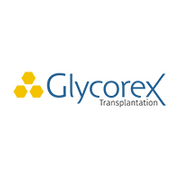Key points
Managing transfusion reactions
• Discuss local protocol for managing a transfusion reaction
• Use of reaction flowchart (if used)
• Use of transfusion reaction management e-learning resources
Rationale
All staff managing patients having a blood transfusion require education in recognising and managing transfusion reactions
Links to resources (where available)
British ATR flowcharts
Key points
Transfusion governance
• Transfusion standards & guidelines in use within the institution/jurisdiction
• Transfusion committee/Blood management committee with responsibility for overseeing transfusion service
• Reporting of adverse reactions and adverse events
• Key transfusion personnel – lead Clinician, lead Transfusion Scientist, Transfusion Practitioner
Rationale
For the learner to get an overview of how transfusion is managed within the organisation
Links to resources (where available)
Haemovigilance Tools and resources | The International Society of Blood Transfusion (ISBT) (isbtweb.org)
Key points
Patient blood management
• Evidence-based, multidisciplinary approach to caring for patients who might need a blood transfusion
• Encompasses all aspects of the transfusion decision-making process, beginning with the initial patient evaluation and continuing through clinical management.
• Aim is for optimal patient outcomes, while maintaining the blood supply to guarantee that blood components are available for patients when they are needed.
Rationale
For the learner to better understand both the decision to transfuse and the alternatives (where available locally).
Specialist patient groups
Children & neonates
Transfusion for children and neonates is not the same as adults. Consider:
• Volumes required (mLs per kg)
• Special components for neonates
• Coagulation ranges [local laboratories]
• Management of transfusion reactions
• Know the triggers in children and neonates
Rationale
Specific transfusion information should be given when delivering education to staff working with these specific patient groups.
Links to resources (where available)
Transfusion for Fetuses, Neonates and Older Children (b-s-h.org.uk)
Specialist patient groups
Obstetrics
• Pre- natal screening including maternal RhD status and maternal antibodies
• RhD prophylaxis/treatment
• Risk of and management of postpartum haemorrhage
Rationale
Specific transfusion information should be given when delivering education to staff working with these specific patient groups.
Links to resources (where available)
Blood Grouping and Antibody Testing in Pregnancy (b-s-h.org.uk)
Specialist patient groups
Trauma & emergency medicine
• Transfusion of patients with no known blood group – use of emergency components
• Management of massive haemorrhage
• Ongoing transfusion support in trauma patients
Rationale
Specific transfusion information should be given when delivering education to staff working with these specific patient groups.
Links to resources (where available)
Specialist patient groups
Haemoglobinopathy patients
• Every patient with sickle cell disease (SCD) and thalassemia should have an extended RBC phenotype utilising a pre-transfusion specimen. Ideally, this should be done during the first year of life, prior to the initiation of a regular transfusion regimen.
• Prior to each transfusion, it is essential to do a complete cross-match and antibody screen for any newly acquired antibodies.
• Components provided must be phenotype matched
• For SCD and thalassemia patients, it is advised to provide fresh units (less than 7–14 days old) to lessen the frequency of transfusions.
Rationale
In order to guarantee uniform standards of care, local recommendations and guidelines are necessary for blood transfusion to Hemoglobinopathy individuals
Chapters
4. Post-transfusion
6. Further resources













